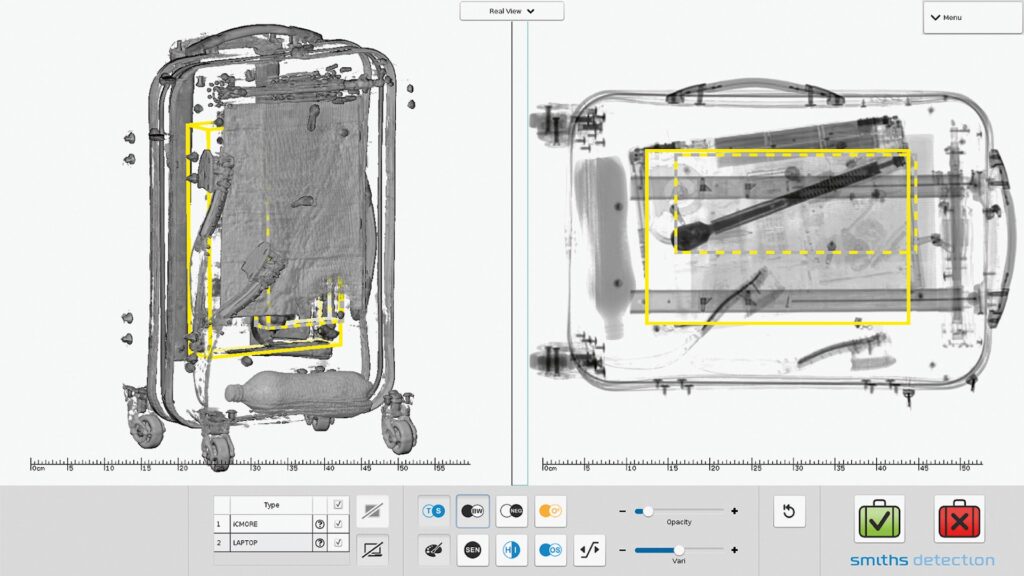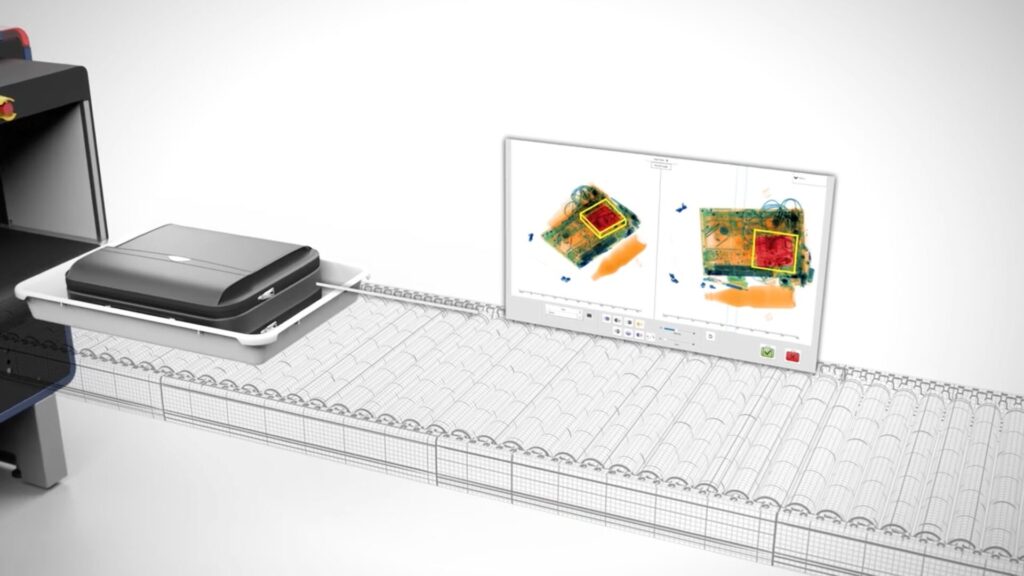Paris airports are starting to equip themselves with a new generation of scanners to speed up security checks. Behind these machines lies the principle of tomography, which has been used for a long time in the medical and scientific field.
Who has never complained at the airport when taking out their toiletry bag, computer and other electronic devices from their suitcase? Soon it will be a distant memory. Two new 3D scanners are gradually appearing in the two Paris airports, as confirmed by Groupe ADP to Numerama: “After an experiment at Paris-Orly in coordination with the DGAC (Directorate General of Civil Aviation)we started the deployment of this new generation of 3D scanners this year”.
For the moment, around ten of these new generation scanners have been installed “at Paris-Charles de Gaulle in four terminals: T2B-D, T2E hall K and T2F, and T1. » The ADP group explains that “in each of these terminals, two screening inspection lines are equipped. At Paris-Orly, Orly 3 also has two equipped lines ». The advantage for passengers is undeniable: the public company estimates the time saving at around a third of what exists today, by removing the constraint of emptying one’s bag.

A machine weighing more than two tonnes
With these new generation scanners, “it is no longer necessary to take out electronic devices (computers, tablets, etc.) or liquids, gels and aerosols ». On the equipped lines, it is even surprising to hear the people responsible for safety say exactly the opposite than they did just a few weeks ago: “Do not take absolutely anything out of your bags”, which risks confusing more than one person. A dream come true for travelers who frequently take the plane.
To achieve this time saving, Groupe ADP uses a scanner model designed by the British company Smiths Detection, the HI-SCAN 6040 CTiX. A beautiful baby weighing more than two tons who uses the principle of tomography. A technological gem whose control interface was even awarded a Red Dot Award in 2020, in the “User Experience Design” category. This is a German award well known in the world of tech, which has often distinguished major consumer electronics brands. Despite our multiple requests, Smiths Detection never responded to our requests for interviews.
An object sliced by X-ray


Pierre Lhuissier is a CNRS research fellow at the SIMaP laboratory (Science and engineering of materials and processes) in Grenoble (Isère). He has been using X-ray tomography to study the damage of materials for around fifteen years: “It’s a bit like someone breaking your arm while they’re doing x-rays.”he laughs to explain his field of research to Numerama.
“When you perform a traditional X-ray, the X-rays pass through your arm, a small part is absorbed by the flesh, a larger part by the bone. This allows sufficient contrast to be obtained to constitute the final image”explains the scientist. “Tomography works in the same way as a medical scanner, by multiplying the x-rays from different viewing angles. We use it when things become more complicated, for example when the bones overlap, like for a wrist. The subject is cut into several thousand slices to obtain as many images. It’s like cutting a sausage, but without actually cutting it. »
This is why it was necessary with older generations of scanners to take computers out of our bags. A charger on top of a computer would obscure the device.


Detection of solid or liquid explosives
With the new generation of scanners, algorithms are responsible for reconstructing everything. To do this, they determine the X-ray absorption coefficient of each voxel, the equivalent of pixels for 3D. “We can thus see inside a brain without having to cut it in two. It is this same principle that is applied to see the contents of suitcases. » Finally, the different gray levels provide information on the type of material.
If the exact operating principle of the HI-SCAN 6040 CTiX is not detailed by Smiths Detection – certainly for security reasons – this is probably partly how the device can detect, for example, the presence of ‘explosives, “including in liquid form”Groupe ADP tells us. “Each material has a particular X-ray absorption signature, confirms Pierre Lhuissier. It is also possible that the machine uses other energy sources to discriminate certain materials. For example, geologists use seismic wave tomography to analyze the Earth’s core. Neutrons can also be used to obtain other contrasts. »
Airports fully equipped by 2030
In airports, one of the first challenges is to go faster. “Fewer passengers are concerned by the search of their personal effects: the image analyzed by the security agent is more detailed, so less baggage is sent to resolve doubts”, details Groupe ADP. To keep up this pace, “it is possible that this machine produces fewer images or that they are noisy. In this case, machine learning can prove to be a time-saving aid. The device knows what shape or material of an object to look for precisely”imagines the CNRS researcher.


In any case, despite its novelty appearance, the system has absolutely nothing experimental: “It is a very proven technology, already used for around ten years for the screening of hold baggage. The miniaturization of this equipment now allows us to install it in our terminals”, explains the public company. Other countries have already been using this type of device for several years, which explains why not all airports force you to empty your bag.
Despite everything, the deployment will not take place in the blink of an eye: “ In total, more than 200 lines will be equipped on Paris-CDG and Paris-Orly by 2030.. Not considering “this new equipment requires training and support for security agents in reading and analyzing these 3D images”. It’s now up to you to spot a HI-SCAN 6040 CTiX the next time you go to a Paris airport, a guarantee of waiting in line for less time and no longer having to unpack your entire bag.
Subscribe for free to Artificielles, our newsletter on AI, designed by AIs, verified by Numerama!
